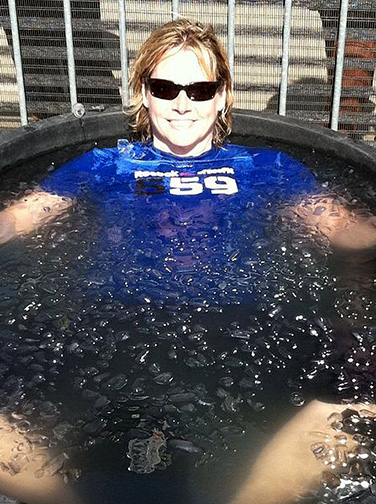Aug 19, 2020AATA Releases Statement on Exertional Heat Stroke
Earlier this week, the Arkansas Athletic Trainers’ Association (AATA) released a statement on exertional heatstroke as some athletic programs around the country resume fall sports.
The statement shares research findings from studies, devices to use to help combat heat-related illnesses, and safety measures to put in place.
Below is the statement shared in its entirety.
“Certain events should never happen in athletics. A bad outcome following exertional heat stroke (EHS) is one of those NEVER events but it remains one of the leading causes of death in athletes. According to research from the Korey Stringer Institute, with proper planning, rapid recognition, and definitive treatment, EHS is a diagnosis where lasting consequences are 100% preventable.
Tools such as using a Wet Bulb Globe Temperature (WBGT) device are necessary for determining if/when it is safe to participate. Coupling WBGT with the Arkansas Activities’ Association activity modification guidelines to appropriately guide safe practice times, intensity, length of breaks, and protective equipment worn is one way that secondary schools can decrease the risk of all heat-related illness, including EHS.

Ensuring that athletes have an unrestricted, readily available source of water before, during, and after activity and providing “cool zones” for scheduled breaks represents another preventive measure. It is imperative that athletes also have an opportunity to allow their body time to adapt to the heat. For any activity in the heat, individuals should be gradually exposed to heat stress and strenuous activity over the course of at least 7 days. The Arkansas Activities’ Association also has guidelines schools must follow to facilitate heat acclimatization.
Unfortunately, prevention measures will never completely prevent EHS. Therefore, schools should also ensure that they are prepared to recognize and respond to an EHS. Arkansas Law (Act 1214, 2011), requires that every school have a venue-specific emergency action plan. This includes being prepared to assess for an elevated core body temperature, provide rapid cooling through ice water immersion, and training stakeholders in executing a well-developed and rehearsed emergency action plan. This law also requires that public school employees have specific training on heat illness.
The #1 thing that schools can do to ensure they are prepared for athletic emergencies like EHS is ensuring that their student-athletes have access to a certified Athletic Trainer (AT). Athletic Trainers are highly qualified, multi-skilled healthcare professionals who have specialized training in preparing for and responding to athletic medical emergencies, such as EHS, cardiac events, cervical spine injuries, and concussions. Sudden death as a result of athletic activity is drastically reduced when an athletic trainer is present, but according to the most recent Athletic Training Locations and Services Study, produced by the Korey Stringer Institute, only 38% of Arkansas high schools have access to an AT. In rural parts of the state, the number of schools with AT services is only 12%.
Facts about Exertional Heat Stroke (EHS) from the Korey Stringer Institute
- Heat acclimatization is the best way to prevent EHS.
- Otherwise healthy athletes who have EHS almost never stop sweating.
- Patients with EHS should be cooled first, and transported to an emergency room second; Transporting a patient to the emergency room too soon can delay valuable, life-saving treatment.
- The most effective cooling modality for an EHS patient involves cold water immersion or a tarp filled with ice-cold water.
- Cooling the patient as quickly as possible prevents death and organ damage as a result of EHS.
» ALSO SEE: Saliva-Based COVID-19 Test Good Sign for Sports
For more information regarding exertional heat illness, see the National Athletic Trainers’ Association Position Statement on Exertional Heat Illnesses or visit the Korey Stringer Institute’s website.
Questions Parents Should be Asking Schools
- Who is taking care of my child? Does the school have a licensed Athletic Trainer? If not, how can we get access to one?
- Does the school have an emergency action plan? Is it specific to the venue? Does it have specific instructions for certain emergencies?
- Does the school have an AED and are they prepared to treat an exertional heat stroke?
- What type of training do the coaches receive about sports safety? Do they have up-to-date education on topics such as sudden cardiac death, concussions, and exertional heat stroke?
- Does the school follow all applicable state laws and guidelines designed to make sports safer?”



